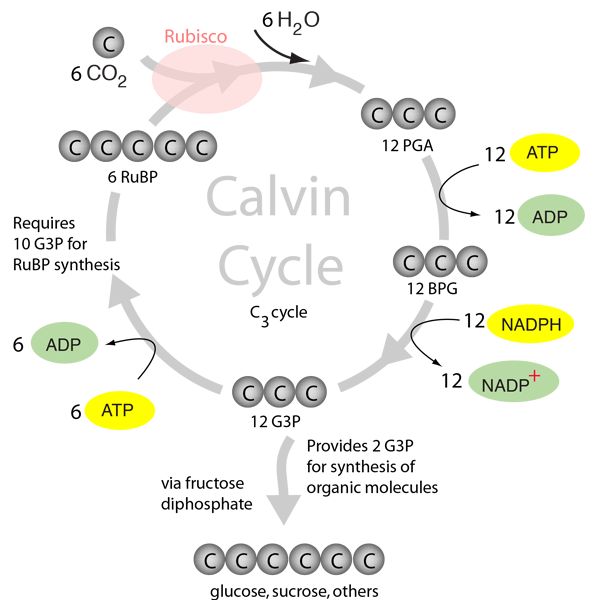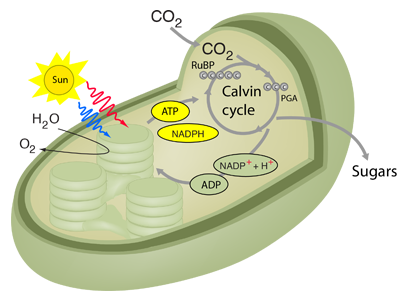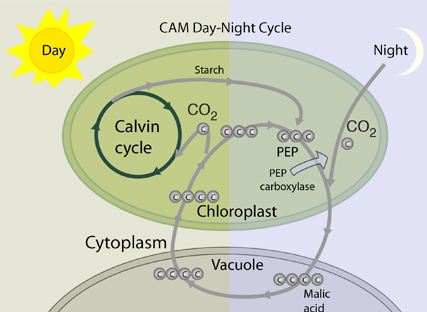The Calvin Cycle
 Click on any part of the diagram for more detail.
Click on any part of the diagram for more detail.
Plants use energy from the sun in tiny energy factories called chloroplasts. Using chlorophyll in the process of photosynthesis, they convert the sun's energy into storable form in ordered sugar molecules such as glucose. In this way, carbon dioxide from the air and water from the soil in a more disordered state are combined to form the more ordered sugar molecules.
Carbon dioxide is captured in a cycle of reactions known as the Calvin cycle or the Calvin-Benson cycle after its discoverers. It is also known as just the C3 cycle. Those plants that utilize just the Calvin cycle for carbon fixation are known as C3 plants. Carbon dioxide diffuses into the stroma of chloroplasts and combines with a five-carbon sugar, ribulose1,5-biphosphate (RuBP). The enzyme that catalyzes this reaction is referred to as RuBisCo, a large molecule that may be the most abundant organic molecule on the Earth. This catalyzed reaction produces a 6-carbon intermediate which decays almost immediately to form two molecules of the 3-carbon compound 3-phosphoglyceric acid (3PGA). The fact that this 3-carbon molecule is the first stable product of photosynthesis leads to the practice of calling this cycle the C3 cycle.
 | In C3 plants the photosynthesis, carbon fixation and Calvin cycle all occur in a single chloroplast. |
In C4 plants the photosynthesis takes place in a chloroplast of a thin-walled mesophyll cell and a 4-carbon acid is handed off to a thick-walled bundle sheath cell where the Calvin cycle occurs in a chloroplast of that second cell. This protects the Calvin cycle from the effects of photorespiration. |  |
 | In CAM plants the photosynthesis and initial carbon fixation occur at night and a 4-carbon acid is stored in the cell's vacuole. During the day, the Calvin cycle operates in the same chloroplasts. |
Energy from ATP and from the reduced coenyzme NADPH is used to remove a phosphate group from 3PGA and reduce the resulting diphosphoglycerate (DPGA) to produce the 3-carbon sugar glyceraladehyde-3-phosphate (G3P). Some of this G3P is used to regenerate the RuBP to continue the cycle, but some is available for molecular synthesis and is used to make fructose diphosphate. The fructose diphosphate is then used to make glucose, sucrose, starch and other carbohydrates.
| Energy cycle in living things |
Photosynthesis Concepts
Reference
Moore, et al.
Ch 7
| HyperPhysics***** Biology | R Nave |